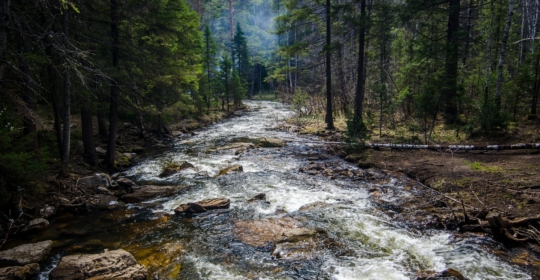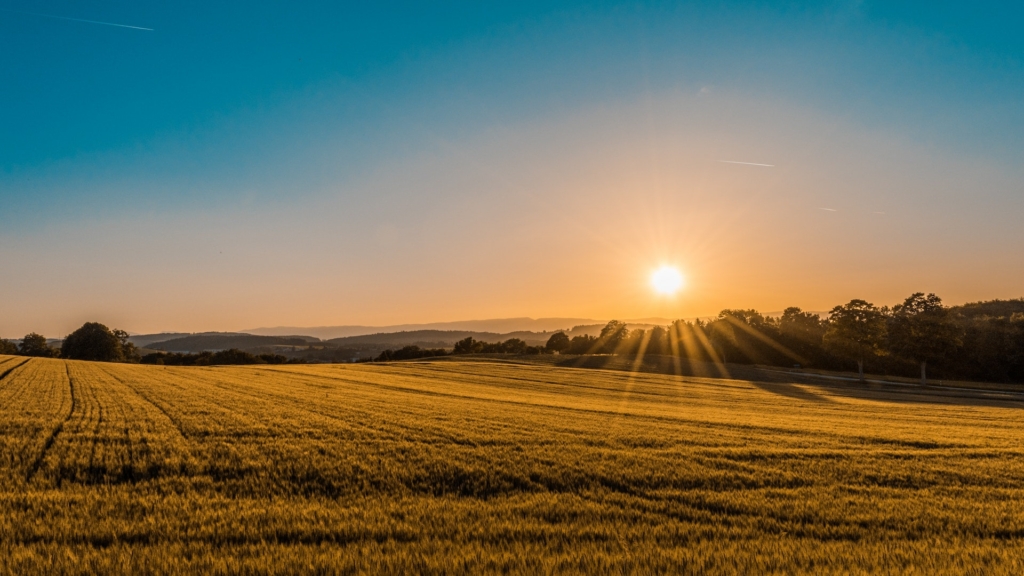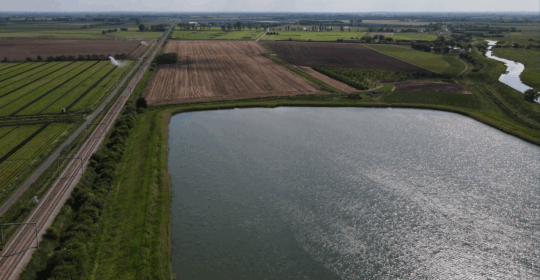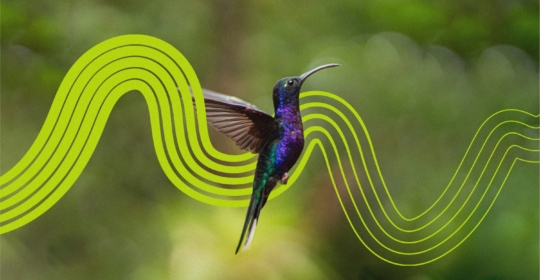
“Nature-positive” — an opportunity to get it right
You may have seen or heard someone use the term ‘nature-positive’ recently, but did you understand exactly what the phrase meant? Or what it implied–for you, or for anyone?
At the Science Based Targets Network, we continue to get questions about whether science-based targets can make a company or city ‘nature-positive’. It is our intention to design methods which can be used to set science-based targets, both for nature and for climate, which will help companies and cities contribute to building a nature-positive world.
We’ve written this perspective to outline what we see as the essential elements of the term and idea, nature-positive. We propose this because we see it as a critical step to establishing common ground between the actors throughout society who need to engage in the large-scale, systems-level transitions that a nature-positive future would require. Please view this as our invitation to further thought and discussion.
In future pieces, we will dig into the science behind nature-positive and show the role of science-based targets (SBTs) in moving our societies and economies toward a nature-positive future.

Since October 2020, we’ve been monitoring use of “nature-positive” via Google’s search engine. We’ve reviewed dozens of documents and pages and found the following trends:
|
We see that some understand nature-positive as an end goal, others as things individuals or actors can do, and others still as the things we can do collectively to create changes in the systems which bind us together.
The uses of the phrase are different, but they are part of the same story.
It is a story of necessity: we need new ways of doing and being in order to slow, halt and reverse the degradation of nature if we want a chance to maintain life as we know it.
We posit that it is most important to understand “nature-positive” as it relates to system-level change, and therefore see nature-positive as a long-term goal (2050), achieved through immediate ambitious actions taken by a range of stakeholders throughout society (ideally in some degree of coordination and cooperation). To avoid (further) catastrophe and upheaval, we need whole cities, whole food systems, whole energy and electricity systems, whole regions, and societies to transition into a nature-positive state of being.
In short, these are the essential elements of the recipe of nature-positivity:
- We urgently need all actors to avoid and reduce pressures like the conversion of forests into farmland and wetlands into urban jungles, the emission of greenhouse gases, the extraction of resources at rates beyond nature’s ability to replenish and recover, and the pollution of waterways and oceans.
- In addition to pressure mitigation, we need all actors to contribute toward the regeneration of natural capital stocks and restoration of ecosystems.
- Individual level efforts must be taken with consideration of nature’s needs and the contributions of others (positive and negative), and then contribute to scaling these up into collective action within ecosystems, value chains, and communities of practice.
- We all must think about and judge our success at a scale that goes beyond the individual actor: progress should not be judged only by a company’s ability to manage its impact, but also by the health of the ecosystems in which its operations are embedded.
We encourage others to adopt a wider perspective in thinking about the issues of nature loss and envisioning an ideal future. Each of us can think about how to “become nature-positive” in our own lives (i.e., contribute maximum benefit to nature, while also reducing our contribution toward harm as much as possible). In addition to this individual action, however, each of us should consider how to contribute to the system-level outcomes associated with a nature-positive goal.
Taking the language from the Global Goal for Nature group and adjusting this to match the scientific review of both the Earth Commission and the authors behind the CBD SBSTTA24/INF/9 submission, these goals should include:
- Collective abatement of pressures and no net loss of nature from 2020,
- Halted decline in the abundance, diversity and resilience of species and of ecosystems by 2030, and
- Visible and sustained improvement in species, populations and ecosystems by 2050.
These goals reflect the need to slow and halt the damage to and loss of nature, in order for us to get to nature-positive outcomes.
To make a nature-positive future a reality, we need sustained, collective action throughout all of society. Thinking in isolation about solutions is a holdover of the “perverse logic” which underpins our social and economic systems, and would only “delay the inevitable disaster” rather than changing our course (Pope Francis, Enciclica Laudato Si 2015, para 194-198).
Why are we writing this? A note from the authors
We want to take this moment to provide more detail about what we understand the concept nature-positive to mean and create space for conversation. With this piece, we hope to provide the basis for NGOs, businesses, governments and others throughout society to build a shared understanding of how different actors can contribute toward a nature-positive future. We believe that by aligning our use of the term, and ensuring we all imbue it with the same meaning and depth, we can effectively engage and mobilize stakeholders throughout society to contribute toward the transitions and actions needed.
We have seen the debates unfolding in connection to the terms carbon neutral and net zero in pursuit of societal goals for climate action. We are wary of similar issues making their way into the global nature agenda, particularly in connection to the term ‘nature-positive.’
For more information, please contact Samantha McCraine – samantha@sbtnetwork.org
Acknowledgements:
Thank you to Alain Vidal, Akanksha Khatri, Betty Cremmins, Gavin Edwards, Martin Sneary, Matt Jones, Nadine McCormick, Naomi Lubick, Nicole Schwab, and Oscar Sabag for your feedback on drafts of this piece.
—–
Please note: we focused in this blog only on the term/concept ‘nature-positive’ – but there are a number of other related concepts and terms like ‘net zero,’ ‘nature-based solutions,’ and offsets. Stay tuned for further pieces on these topics.
Further reading:
UNEP 2021, WWF 2021, WEF 2021, Gucci 2021, Conservation Hierarchy 2021, The Nature Conservancy 2020, The Biodiversity Consultancy 2020, WWF 2020, WEF 2020, UNEP-WCMC 2020, Nature4Climate



